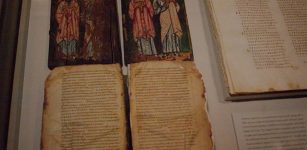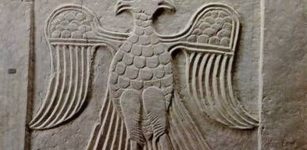Babylonian Star Calendar Found In Underground Library In Nineveh, Iraq
MessageToEagle.com – This is a fragment of a circular star calendar from the underground library of King Ashurbanipal (668-627 BC) in Nineveh, Iraq.
Star charts and calendars were found among the library’s huge cache of tablets, multiple fragments of late second millennium.
The two flat sides of the disc are inscribed in Assyrian Cuneiform with names of the months, names and figures of key stars and measurements of degrees.
It is signed by the scribe Nab-Zuqup-Kenu, who lived during the reigns of Sargon II (720-704 BC) and Sennacherib (703-680 BC).
The Babylonian calendar is one of the greatest achievements of antiquity: it combines a solar and a lunar cycle in such a way that the beginning of the year never wanders far from the Spring equinox.
The basic theoretical principle is common: in a cycle of nineteen years, we have twelve years of twelve lunar months and seven years of thirteen months.
See also:
Assyrian King Ashurbanipal’s Great Library With Thousands Of Cuneiform Tablets
Ancient Egyptians Observed Algol’s Eclipses – Cairo Calendar Analyzed
Theoretically, dates in ancient Babylonian texts can be converted to our calendar. Babylonia (Babylonian Bâbili – ‘Gate of God‘ and in Old Persian ‘Babirush‘) was the ancient country of Mesopotamia, known originally as Sumer and later as Sumer and Akkad, lying between the Tigris and Euphrates rivers, south of modern Baghdad, Iraq.
The Babylonians were brilliant at astronomy, which they highly respected. Many of the constellations that we see in the sky were first categorized by them. They kept careful records and recorded celestial events under the belief they could shape future events.
Under Hammurabi the Lawgiver, in 1800 BC planetary records and star catalogs were compiled.
© MessageToEagle.com











